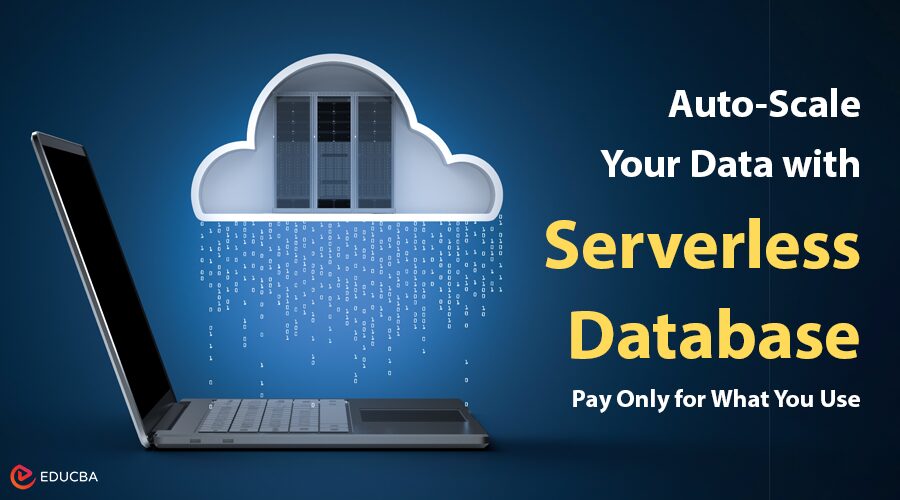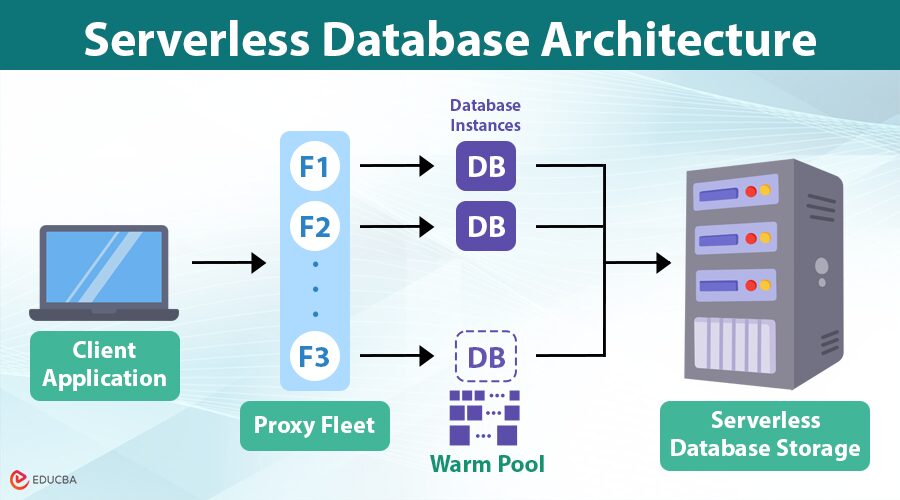
Serverless Databases: Overview
In recent years, cloud computing has transformed the way businesses handle data. One of the most innovative concepts to emerge is the serverless database. As companies increasingly shift toward cloud services, the serverless model offers a streamlined, cost-effective, and scalable solution to database management. But what exactly is a serverless model, and why should businesses consider it? This article will explore the concept of serverless DB, its advantages, challenges, and how they are changing the data storage landscape.
What is a Serverless Database?
A serverless database is a cloud-based service that eliminates the need for users to manage or maintain the underlying infrastructure, like servers or virtual machines. In traditional databases, you need to provision, scale, and manage servers manually, whereas with a serverless model, the cloud provider handles these tasks automatically.
Serverless databases are highly scalable and flexible. They allow businesses to pay only for the resources they use, making them an attractive option for many organizations. The cloud provider handles the database’s operational overhead, allowing users to focus solely on their applications and business logic.
Key Features of Serverless Databases
Here are some standout features that make serverless databases a powerful choice for modern application development:
- Automatic Scaling: Serverless databases dynamically scale up or down based on demand. This elasticity ensures your database can handle traffic spikes without manual intervention, making it highly responsive.
- Pay-as-You-Go Pricing: Unlike traditional databases, which charge you for provisioned resources regardless of usage, serverless DB charges you based on the actual consumption of resources, including storage and processing. This can save costs, especially for workloads with unpredictable or variable traffic.
- No Infrastructure Management: Since the cloud provider handles the infrastructure, users do not need to worry about managing servers, updates, or patches. This enables teams to concentrate on developing applications instead of managing database administration tasks.
- High Availability and Fault Tolerance: Cloud platforms typically build serverless databases with high availability in mind. They replicate data across multiple locations and ensure fault tolerance, thus minimizing downtime and data loss risks.
How Does a Serverless Database Work?
Below is a step-by-step explanation of the flow and components in the serverless-DB architecture:
#1. Client Application Request
- The user or client application initiates a request (e.g., a query, update, or insert).
- This could involve a mobile app, a web app, or a backend service making an API call.
#2. Proxy Fleet (Request Router Layer)
- The request first reaches the Proxy Fleet.
- The proxy fleet serves as a routing layer that:
- Authenticates and validates the request.
- Determines the best compute instance (database node) to process the request.
- Ensures efficient load balancing.
#3. Compute Layer (DB Instances)
- The proxy fleet routes the request to an active compute instance, which is a serverless DB node.
- These instances are stateless and ephemeral, spun up or down based on demand.
- If no active DB instance is available:
#4. Warm Pool Activation
- The system activates a pre-initialized (warm) compute instance from the Warm Pool.
- These instances are “paused” but ready, minimizing cold start latency.
- Once active, they process the database workload.
#5. Serverless Storage Layer
- All compute instances connect to a shared, durable, decoupled storage layer.
- It is independently scalable and persists all data regardless of the compute instance lifecycle.
- Supports high availability and fault tolerance.
#6. Response Back to Client
- Once the query executes and the system fetches the results from storage,
- The system routes the response back through the Proxy Fleet.
- Finally, returned to the client/application.
Benefits of Serverless Databases
Below are some key benefits that highlight their efficiency and scalability:
- Cost Efficiency: The pay-per-use model enables businesses to pay only for their actual usage, resulting in substantial cost savings, particularly for those with fluctuating workloads. You avoid overprovisioning and paying for unused capacity, making it ideal for startups or businesses with fluctuating demands.
- Simplified Database Management: Abstracting database administration tasks, such as hardware provisioning, backup management, and performance tuning, enables teams to focus on building innovative solutions rather than managing infrastructure.
- Scalability Without Effort: Whether it is handling a sudden traffic surge during peak hours or scaling down during quieter periods, serverless DB automatically adjusts resources. This enables businesses to scale without concerns about performance limitations in their database systems.
- Faster Time-to-Market: Developers can deploy applications faster as they do not need to configure and manage the database infrastructure. This results in quicker development cycles, faster iterations, and enhanced innovation.
Popular Serverless Database Providers
Here are some of the leading serverless database providers, each offering unique features:
| Platform | Serverless Database | Highlights |
| AWS | Aurora Serverless v2 | MySQL/PostgreSQL compatible, auto-scaling |
| Google Cloud | Cloud Firestore & BigQuery | NoSQL and analytics-ready |
| Azure | Cosmos DB (serverless mode) | Multi-model, globally distributed |
| FaunaDB | Fauna | Global low-latency, GraphQL-native |
| PlanetScale | Vitess-powered, serverless MySQL | Git-style workflows, horizontal scaling |
Challenges and Considerations
While serverless models offer numerous benefits, there are some potential challenges to consider:
- Cold Starts: Serverless databases can experience “cold starts” if unused. This can result in slower response times when the system needs to reinitialize. However, this impact is typically minimal for many use cases.
- Vendor Lock-In: They rely heavily on particular cloud providers, which can result in vendor lock-in. Moving data from one provider to another can be a complex and costly process.
- Limited Customization: Since serverless databases abstract away much of the management, they may not offer the same level of customization as traditional database solutions. Businesses that require very specific configurations or optimizations may find serverless solutions limiting.
- Cost Control: Although serverless databases can be cost-efficient, monitoring usage is essential. Unexpected spikes in traffic or queries can lead to higher-than-expected costs, especially if the pricing model is not well understood.
Is a Serverless DB Right for You?
When deciding whether a serverless database is a good fit for your project, consider the following:
- Workload nature: The serverless model excels in unpredictable or variable workloads. A traditional database might be more appropriate if your application is consistently in high demand.
- Cost concerns: Serverless models are more cost-efficient for dynamic applications, but traditional databases may offer better pricing for applications that require constant heavy loads.
- Technical requirements: If you need fine-grained control over your database, serverless may lack certain features.
Final Thoughts
Serverless databases are revolutionizing how businesses manage and scale their data. Offering automatic scaling, cost savings, and reduced management overhead, these databases allow businesses to focus on innovation rather than infrastructure. Whether you are building a mobile app, an e-commerce platform, or an IoT application, serverless models are a powerful tool in your technology stack. As cloud computing evolves, serverless DB will continue to become more refined, offering businesses an even more efficient and cost-effective way to manage their data.
Recommended Articles
We hope this guide on serverless databases helps you understand their benefits and scalability for your applications. Check out these recommended articles for more insights on optimizing your database management and improving performance.

